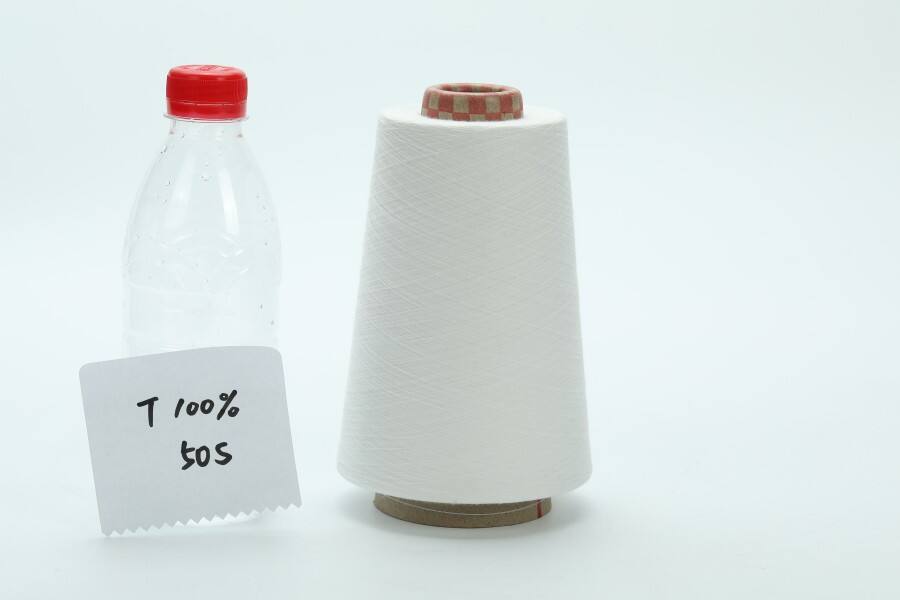Fiber Blending Uniformity and Its Impact on Yarn Consistency
Getting those fibers mixed evenly matters a lot when it comes to making good quality polyester cotton yarn. Some research published last year showed pretty clearly that if there's about a quarter difference in how the fibers get blended together, we end up seeing nearly a quarter more defects in the finished product. These days, manufacturers are turning to some pretty advanced tech solutions for this problem. The latest systems actually analyze the mix on the fly using something called spectrographic analysis. This helps keep the blend within just 1.5 percent variation from batch to batch. What does all this mean? Well, the yarn ends up with much more consistent strength throughout, which makes a big difference in how well it performs in actual applications.
Evaluating Cotton and Polyester Batch Variability Using Quality Control Tools
Modern mills employ triple-stage testing protocols:
- Fiber micronaire verification for cotton maturity
- Polyester crystallinity indexing via differential scanning calorimetry
- Batch-wide trash content analysis using USTER AFIS PRO20 systems
These methods reduce raw material-related quality deviations by 30% in high-volume production.
Adhesion of Sizing Agents to Polyester/Cotton Yarns During Preprocessing
Getting sizing agents to work well together continues to be a big headache for those making polyester cotton yarn blends. Starch based products stick pretty well to cotton fibers around 89% effectiveness but polyester needs something different altogether. The stuff works better when combined with hybrid polymers that have those special ionic bonds. When manufacturers get their preprocessing right about 120 to 130 degrees Celsius heat setting and keep size pickup between 6 and 8 percent they end up with this nice even coating that protects the yarn. And this matters because it cuts down on warp breaks during weaving by roughly 40%, which saves time and money in production.
Optimizing Spinning Processes to Enhance Polyester Cotton Yarn Performance
Process Consistency in Spinning Through Real-Time Monitoring in Production
Real-time monitoring systems track 18+ process parameters simultaneously—from rotor speed to fiber feed rates—enabling instant adjustments that maintain ±2% quality variance. In a comprehensive study of open-end rotor spinning optimization, automated parameter adjustments reduced yarn imperfections by 40% compared to manual methods (2023 trial data).
Twist Level Control in Yarn for Improved Mechanical Strength
Precision twist control within the 800–1,200 TPM range boosts tensile strength by 15–20% while maintaining optimal elongation. Advanced systems integrate three key factors:
| Control Factor | Impact on Yarn Strength | Tolerance Range |
|---|---|---|
| Twist measurement systems | ±1.5% accuracy | 95–105% set value |
| Tension control devices | 0.12 cN/tex consistency | 0.8–1.2 cN/tex |
| Spindle maintenance | 98% rotation stability | ±2% RPM deviation |
Use of Advanced Machinery and Automation in Ring and Rotor Spinning
Modern spinning units integrate AI-driven drafting systems that adjust roller settings every 0.8 seconds, achieving 99.2% CV% consistency across 10,000+ spindle positions—meeting USTER STATISTICS 2024 5% percentile standards. Automated doffing systems paired with robotic material handling reduce human-induced variations by 63% in back-to-back production cycles.
Minimizing Irregularities via Automated Quality Inspection in Textile Systems
Vision systems with 50μm resolution detect 94% of neps and slubs before winding, while capacitive sensors identify 97% of density variations in real-time. Combined with self-correcting winding heads, these systems achieve fewer than 0.8 defects per kilometer in commercial polyester cotton yarn production—30% below traditional thresholds.
Precision Testing and Data-Driven Feedback for Quality Stability
Tensile strength and evenness testing using Uster and Tensorapid systems
Manufacturers rely on Uster® Evenness Testers and Tensorapid® Tension Meters to measure tensile strength (typically 18–22 cN/tex) and diameter variation (±2.5% Uster CV). High-speed sensors sample at 400 meters/minute, detecting micron-level inconsistencies undetectable by human inspectors (Textile Institute, 2023).
Data-driven feedback loops for quality stability in yarn production
Real-time data integration enables immediate process corrections, reducing yarn faults by 38% in trials conducted by leading Asian mills. Adaptive algorithms compare current metrics against 12–18 months of historical data, automatically adjusting spinning parameters when elongation deviates beyond ±1.5%.
Correlation between fiber blending uniformity and final yarn performance
A 2023 Textile Research Journal study showed that 95% CV in fiber blending results in 15% weaker tensile strength and 20% higher breakage rates. This underscores the need for precision testing at the raw material stage to ensure consistent mass production outcomes.
Advanced Sizing Techniques to Improve Mechanical Strength of Polyester Cotton Yarn
Thermoplastic Starch as a Sizing Agent for Sustainable Performance
Thermoplastic starch improves durability while meeting environmental demands. A 2024 biomaterials study found starch-based formulations increase yarn tensile strength by 18–22% compared to conventional agents, supporting eco-friendly scaling of polyester cotton production.
Gellan Gum in Composite Films for Enhanced Yarn Treatment
Composite films combining gellan gum with cellulose derivatives form a protective barrier that reduces fiber breakage during weaving. These bio-based films achieve 94% adhesion efficiency on polyester-cotton blends, verified through standardized peel tests. They also minimize hairiness without compromising fabric breathability.
Sizing Agent Performance in Polyester Cotton: Adhesion and Removal Efficiency
Optimal sizing balances adhesion and removability. Trials show a 6–8% polymer concentration delivers:
- 92% size penetration uniformity across yarn surfaces
- 85% starch removal rate during desizing (3% below industry waste thresholds)
This prevents residue from interfering with dyeing while preserving structural integrity.
AI and Automation in Real-Time Quality Detection for Mass Production
Artificial Intelligence for Quality Detection in High-Speed Production Lines
Vision systems powered by artificial intelligence can check polyester cotton yarn at over 2000 meters per minute which is roughly 40 times quicker than what humans could manage manually. These systems rely on something called convolutional neural networks to spot tiny inconsistencies in how the fibers blend together and maintain their twist. Factories that have implemented real time AI checks are seeing around 78 percent fewer defects and keeping their machines running almost constantly with about 99.6% uptime according to recent reports. Factory managers tell us that when these smart systems detect any diameter changes beyond plus or minus 5%, they instantly alert operators so problems get fixed before they become bigger issues down the line.
Machine Learning Models Predicting Yarn Defects From Process Data
Machine learning algorithms look at around fifteen different production factors like humidity levels, rotor speeds, and fiber strength to forecast issues with hairiness and thin spots anywhere from eight to twelve manufacturing stages ahead. These models have been trained using data from over fifty thousand past production cycles and can spot patterns that humans might miss. For instance, they've learned that even a small two degree Celsius change in temperature during the blending process can actually raise elongation variability by nearly nine percent. Companies that implemented this technology early on report getting close to ninety two percent accuracy in their predictions, which translates into real savings. One textile manufacturer alone managed to reduce waste products worth three point two million dollars every year after adopting these predictive systems.
Integration of AI With Real-Time Monitoring in Production Environments
Ring spinning frames connected to IoT and AI form these closed loop systems that automatically fine tune themselves around 240 times during each work shift. The sensors check the tension levels every 100 milliseconds or so, and then smart algorithms tweak things like traveler weights and how fast the spindles spin to keep count variation below 0.3%. Looking at what's happening across the industry, companies adopting Industry 4.0 tech report seeing about 35% fewer mechanical stoppages and their yarn comes out much more consistent too, with improvements in evenness reaching around 28% according to those Uster stats from last year. When artificial intelligence handles all these decisions, the whole process just runs smoother.
Controversy Analysis: Limitations of AI in Detecting Subtle Yarn Imperfections
AI is pretty good at spotting obvious flaws such as slubs and neps in fabrics, yet around one in five manufacturers still grapple with finding those tiny alignment issues below 200 microns that mess up dye absorption rates. The current generation of vision systems has trouble seeing through semi-transparent polyester-cotton blends when contrast is low, which means they miss nearly 18 percent of these core-sheath problems according to recent research from Textile Research Quarterly (2024). Some companies are starting to experiment with hybrid approaches that mix AI capabilities with spectral analysis techniques. However, this comes at a cost since these advanced setups require anywhere between three to five times the computing power of standard systems, making them quite expensive to implement for many smaller operations.
FAQ Section
What are the benefits of ensuring fiber blending uniformity in polyester cotton yarn?
Ensuring fiber blending uniformity leads to a more consistent yarn strength, significantly affecting the yarn's performance in practical applications.
How do modern mills evaluate batch variability in cotton and polyester?
They employ triple-stage testing protocols including fiber micronaire verification, polyester crystallinity indexing, and trash content analysis using advanced systems like USTER AFIS PRO20.
What role does AI play in real-time quality detection in yarn production?
AI-driven systems monitor and adjust production parameters to reduce defects, minimizing human intervention, and ensuring consistent quality outputs in high-speed production lines.
Table of Contents
- Fiber Blending Uniformity and Its Impact on Yarn Consistency
- Evaluating Cotton and Polyester Batch Variability Using Quality Control Tools
- Adhesion of Sizing Agents to Polyester/Cotton Yarns During Preprocessing
- Optimizing Spinning Processes to Enhance Polyester Cotton Yarn Performance
- Precision Testing and Data-Driven Feedback for Quality Stability
- Advanced Sizing Techniques to Improve Mechanical Strength of Polyester Cotton Yarn
- AI and Automation in Real-Time Quality Detection for Mass Production
- FAQ Section


